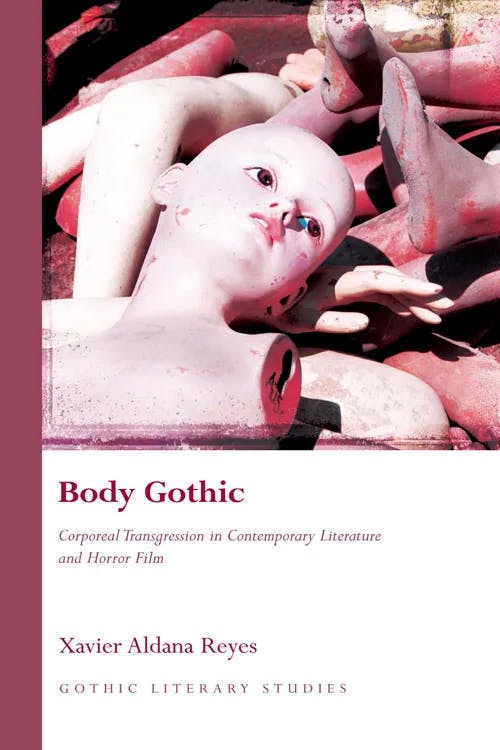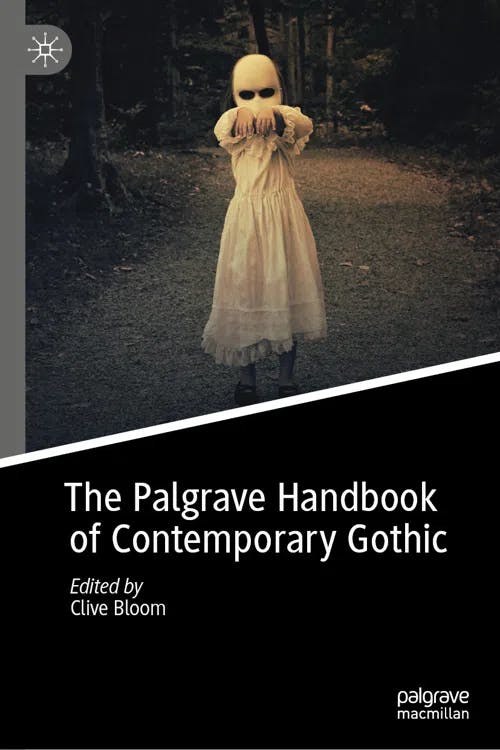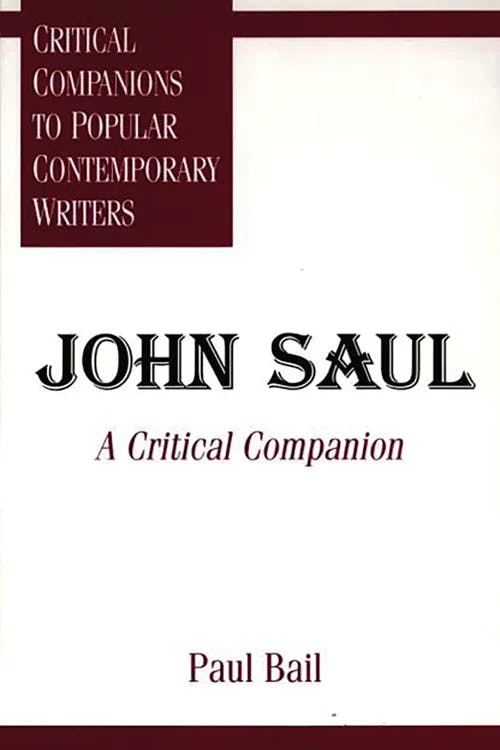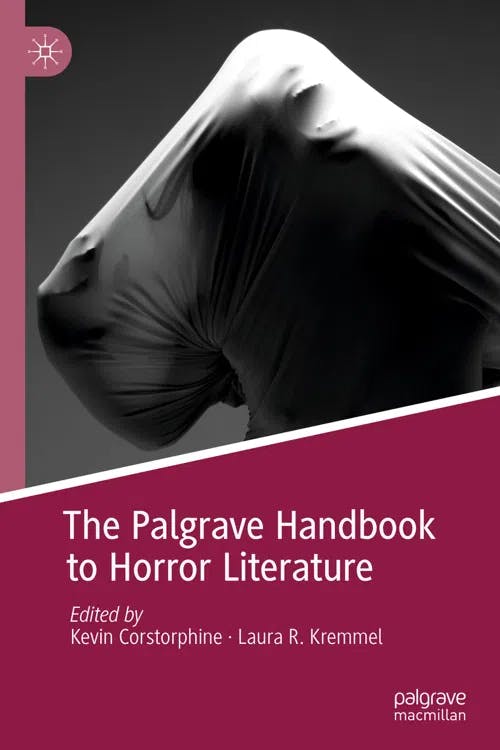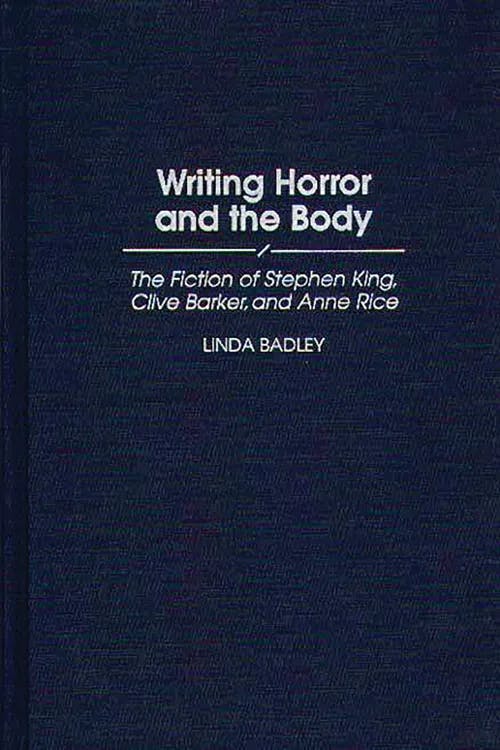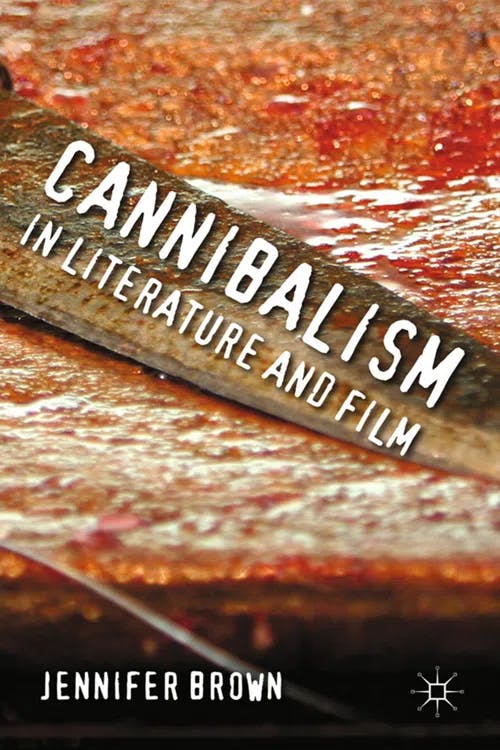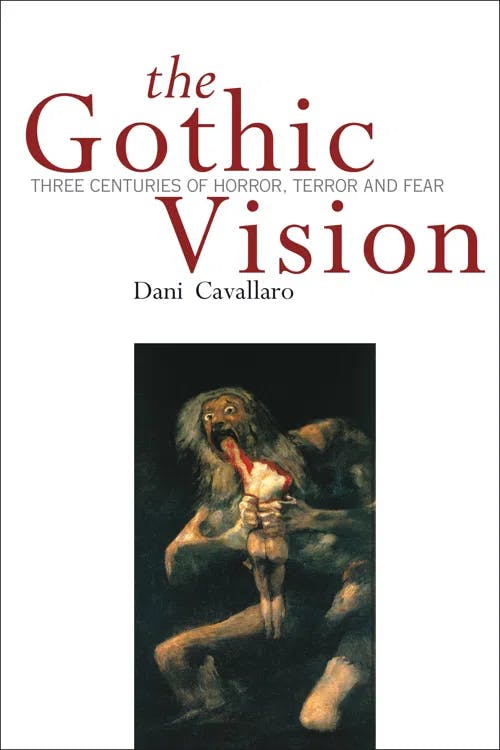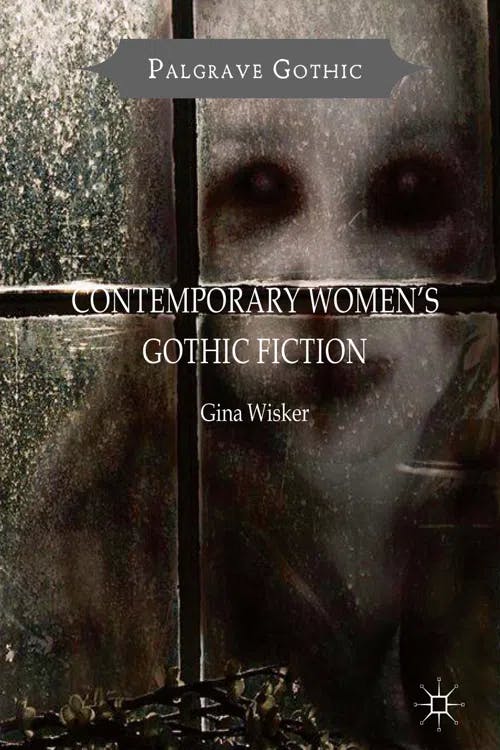What is Splatterpunk?
PhD, English Literature (Lancaster University)
Date Published: 28.03.2024,
Last Updated: 15.04.2024
Share this article
Definition
Splatterpunk is a horror movement and subgenre that emerged in the 1980s. It is characterized by graphic depictions of violence. The term was coined by horror writer David J. Schow at the World Fantasy Convention (1986):
I made up the term to describe hyperintensive horror - the Clive Barker 'there are no limits' variety - [back] when it mattered. If Stephen King is comparable to McDonald's, then splatterpunk - in its day - was akin to certain varieties of gnarly mushroom, the kind that could open new doors of perception, or, in noncompatible metabolisms, just make you puke. (quoted in Robert McCammon, "The Splatterpunk Files," 2020)
The term is often used interchangeably with “extreme horror” and is typified in the kind of horror fiction which aims to unsettle its reader through the use of grotesque descriptions, excessive violence, and often sexually transgressive or otherwise taboo content.
In Body Gothic, Xavier Aldana Reyes provides us with a clear definition of splatterpunk and its place within the Gothic:
Contrary to more modern gothic, splatterpunk, as a particularly virulent horror subgenre, often relishes the histrionics of corporeality and makes the most of the excesses that have come to define it. (2014)
Xavier Aldana Reyes
Contrary to more modern gothic, splatterpunk, as a particularly virulent horror subgenre, often relishes the histrionics of corporeality and makes the most of the excesses that have come to define it. (2014)
Splatterpunk’s engagement with body horror is reminiscent of Julia Kristeva’s abjection theory. In Powers of Horror: An Essay on Abjection (1982), Kristeva defines the abject as that which does not "respect borders, positions, rules" and "disturbs identity, system, order" (in Classic Readings on Monster Theory, 2018). The abject arises when we experience or see something which threatens these borders, such as illness, disease, or death, as this reminds us of the vulnerability of our bodies and our mortality.
Whereas “quiet horror” (or psychological horror) allows the reader’s imagination to fill in the blanks and relies upon the terror of the unknown, splatterpunk does not dare look away. Instead, key pioneers of the subgenre, John Skipp and Craig Spector, highlight that pushing boundaries is at the core of splatterpunk:
Despite the public outcry that it’s time to stop, we’ve gone far enough, thank you—or perhaps, ironically, because of it—another handful of intrepid souls will feel the itch to probe a little deeper.
To expand the horizon.
To go too far.
[...]
Until we’ve gone all the way.
(“On Going Too Far or Flesh Eating Fiction,” Book of the Dead, 1989)
This guide will trace the splatterpunk movement from its inception, identifying key writers who tested the limits of their readers. In addition, we will explore how this divisive genre has been used as a tool with which to dissect social and political issues in contemporary society.
Early influences
As Aldana Reyes points out,
splatterpunk did not develop in a vacuum, and should be envisioned as a culmination of the corporeal turn that the horror genre experienced as a result of the influence of cinematic trends and their explicit images. (2014)
The influence of 1980s horror cinema is clear in splatterpunk fiction. Skipp and Spector’s Book of the Dead, for example, contains a foreword written by George A. Romero, director of Night of the Living Dead (1968).
We can also find antecedents to splatterpunk in works of literature. James Herbert’s The Rats (1975), Aldana Reyes highlights, is a key example of Gothic becoming “sparingly” more graphic and acts as “a splatterpunk novel avant la lettre” (2014). Herbert’s work signals the visceral descriptions that became characteristic of splatterpunk:
Rats! His mind screamed the words. Rats eating me alive! God, God help me. Flesh was ripped away from the back of his neck.
[...]
Shivers ran along his spine, to his shocked brain. The dim shadows seemed to float before him, then a redness ran across his vision. It was the redness of unbelievable pain. He couldn’t see any more—the rats had already eaten his eyes. (Herbert, 1975)
Stephen King, in his introduction to James Herbert: By Horror Haunted (Steven Jones, 1992), compares Herbert’s work to the 1970s punk rock movement. As Simon Brown summarizes,
Instead of being cerebral and polished, punk was visceral and confrontational, spitting and shouting obscenities into the front row, much the same way that, King argues, in The Rats and The Fog Herbert grabs the reader and screams in their face, forcing them to pay attention as vermin devour a baby in a crib. (“James Herbert’s Working-Class Horror”, The Palgrave Handbook of Contemporary Gothic, 2020)
Edited by Clive Bloom
Instead of being cerebral and polished, punk was visceral and confrontational, spitting and shouting obscenities into the front row, much the same way that, King argues, in The Rats and The Fog Herbert grabs the reader and screams in their face, forcing them to pay attention as vermin devour a baby in a crib. (“James Herbert’s Working-Class Horror”, The Palgrave Handbook of Contemporary Gothic, 2020)
Herbert’s in-your-face style became one of the key features of the splatterpunk movement.
A divisive genre
Splatterpunk has often been criticized by its detractors for its focus on gratuitous descriptions in lieu of real artistic expression or literary merit. One such critic is horror novelist Robert Bloch, famous for writing Psycho (1959). As Paul Bail explains,
Robert Bloch [...] considers the horror story to be a type of morality play, in which good should generally triumph. He is very critical of what he sees as the mindless violence of more recent horror films and their prose imitators, the splatterpunk writers. (John Saul: A Critical Companion, 1996)
John Saul
Robert Bloch [...] considers the horror story to be a type of morality play, in which good should generally triumph. He is very critical of what he sees as the mindless violence of more recent horror films and their prose imitators, the splatterpunk writers. (John Saul: A Critical Companion, 1996)
Bloch, a master of creating terror and suspense, argued that “[t]here is a distinction to be made between that which inspires terror and that which inspires nausea" (quoted in Jean W. Ross, Contemporary Authors, 1989).
Splatterpunk has also been condemned for its representation of women. In her review of Splatterpunks II: Over the Edge (1995) edited by Paul Sammon, an anthology seemingly dedicated to female splatterpunk authors, Ellen Datlow had this to say:
[...] why are only half the stories by women? Oh, they're about women this time. . . . You mean unlike the first volume where the female characters are mostly victims? But at least eleven of the stories in Splat ll feature women as victims of torture, degradation, and/or murder. [...] whether the stories are by women or men, what is being called "splatterpunk" is for the most part violent, brutal, ugly fiction treating women as victims. (The Year’s Best Fantasy and Horror, 1996)
We will go on to explore the problematic treatment of women in the subgenre, as evident in the work of Jack Ketchum.
Despite these proclamations that splatterpunk lacks any literary merit, many critics, as we will go on to reveal, have argued that the transgressive and taboo subgenre articulates the horror of the world we live in:
[...] by unsettling distinctions and exposing hypocrisies, [splatterpunk] brings the stark horror of contemporary reality to the surface and refuses to let us stir it back into the depths. (Aalya Ahmad, “Transgressive Horror and Politics,” The Palgrave Handbook to Horror Literature, 2018)
Edited by Kevin Corstorphine and Laura R. Kremmel
[...] by unsettling distinctions and exposing hypocrisies, [splatterpunk] brings the stark horror of contemporary reality to the surface and refuses to let us stir it back into the depths. (Aalya Ahmad, “Transgressive Horror and Politics,” The Palgrave Handbook to Horror Literature, 2018)
The Splat Pack and beyond
As Aldana Reyes explains,
[Splatterpunk] roughly blossomed from 1985 to 1990 through the work of the self-professed Splat Pack, which included John Skipp and Craig Spector, Joe R. Lansdale, Richard Christian Matheson, Ray Garton, Robert R. McCammon and Schow himself amongst others, and the aggressively violent and extremely visceral novels of cult horror writers Edward Lee or Jack Ketchum [...] (2014)
However, some writers like Lansdale have shunned the splatterpunk label. In a 1992 interview, Lansdale explains he finds the moniker too narrow (“Chewin’ the Fat with Mama Lansdale’s Youngest Boy,” Conversations with Joe. R. Lansdale, 2022). Despite these misgivings, the aforementioned writers were seen as pioneers of the subgenre. Since then, many have joined their ranks.
The following section will focus on the work of Skipp, Spector, Schow, Clive Barker, Jack Ketchum, and Billy Martin (formerly Poppy Z. Brite).
John Skipp and Craig Spector
Skipp and Spector co-authored several splatterpunk texts and were instrumental in the development of the subgenre. Their debut The Light at the End (1986) is seen as the first novel to start the splatterpunk movement. The text combines the urban horror of New York slums with a punk aesthetic. The antagonist Rudy Pasco, a punk rocker turned vampire, represents inner-city decay, according to David Simmons, and “his actions go largely undetected by the city authorities, and, instead, the task of vanquishing him falls to a ragtag bunch of individuals familiar with the inner city environment” (American Horror Fiction and Class, 2017).
In addition to their contributions to the oeuvre of splatterpunk fiction, Skipp and Spector have provided insight into the theoretical side of the movement, identifying the key ingredients that inspire fear and revulsion in their readers. In their introduction to the Book of the Dead, Skipp and Spector explain there are three levels to horror. At the first level,
It’s fear as a matter of simple biology: the flesh, surrendering to the laws of physics. By itself, it’s most certainly horrifying, and it plays from the understanding that you can flinch if you want to… the camera simply won’t do your flinching for you. (Skipp and Spector, 1989)
The second level “takes place on the stripped-naked faces of the people to whom the horror is occurring” (Skipp and Spector, 1989). The third and final level is “the level of gestalt, of fusion and reintegration”:
At this point, you can no longer detach; the unknown has become tangible and all too real, beyond cheapening on the one hand or denial on the other. You can see the wet hole and the charred stump, yes; but beyond that—and in vital, visceral conjunction— you can know how it feels to be a part of it. (Skipp and Spector, 1989)
It is at this third level where splatterpunk thrives.
David J. Schow
David J. Schow, who coined the term “splatterpunk,” has written numerous texts in the subgenre from short stories to novels and screenplays. One of Schow’s most prominent works is the story “Jerry’s Kids Meet Wormboy” (in Book of the Dead, 1989). This post-apocalyptic, zombie tale features Wormboy, a cannibal, as he battles a preacher, Reverend Jerry and his group of followers, pacifist zombies who refuse to consume human flesh. Aalya Ahmad describes Schow’s work as “replete with cartoonish ultra-violence and messily exploding, putrescent zombies, giving the reader little time to recover from one gross-out scene to the next” (2018).
As Ahmad points out,
Splatterpunk’s co-ascendancy with the rise of Ronald Reagan and the religious right in the United States during the 1980s underscores the subversive intent of much of its excesses, often directly aimed, as in “Jerry’s Kids Meet Wormboy,” at authoritarians and religious hypocrites. (2018)
Schow’s other works include The Kill Riff (1988) and Seeing Red (1990).
Clive Barker
Perhaps the most well-known splatterpunk author in the mainstream is Clive Barker, whose fiction includes novels like The Damnation Game (1985), and the splatterpunk anthology series Books of Blood (1984-5). Barker’s novella The Hellbound Heart (1986) was soon after adapted into the film Hellraiser (Barker, 1987), directed, written, and produced by Barker.
While Barker “actively rejected the ‘splatterpunk’ or ‘gore’ labels” (Aldana Reyes, 2014), the features of his work epitomize the subgenre. Barker describes his work as follows:
The kind of horror fiction I write is primarily interested in tearing away the veil. Confrontation with the image, seen clearly. I'm trying to see what the wound means. And the only way ... is to look at the wound. (Quoted in Linda Badley, Writing Horror and the Body, 1996)
Linda Badley
The kind of horror fiction I write is primarily interested in tearing away the veil. Confrontation with the image, seen clearly. I'm trying to see what the wound means. And the only way ... is to look at the wound. (Quoted in Linda Badley, Writing Horror and the Body, 1996)
Barker’s fiction tends to focus on the horror of corporeality. In “The Midnight Meat Train,” (1984) for example, a man (the “Butcher) murders people on the subway train in order to feed human meat to deities that live underneath the city of New York (Barker, Books of Blood). Despite the gratuitous content, as Sorcha Ní Fhlainn explains, “Barker’s treatment of the body is not purely exploitative”:
[Barker’s] corporeal experiments, often destructive and bloody, tend to lead to a species of transcendence from a bounded conception of reality. Horror allows Barker to explore the limits of the body, and hence, of the human. This is not the case because he sees corporeality as a bad thing – quite the contrary. [...] Even though Christianity has been a huge influence in his imagery and thematic concerns, corporeality, for Barker, offers a sense of ontological belonging that is truly universal, a commonality premised on our very existence as sentient beings who live and interact with each other through our respective bodies. (“‘To darken the day and brighten the night,’”Clive Barker: Dark imaginer, 2017)
Edited by Sorcha Ní Fhlainn
[Barker’s] corporeal experiments, often destructive and bloody, tend to lead to a species of transcendence from a bounded conception of reality. Horror allows Barker to explore the limits of the body, and hence, of the human. This is not the case because he sees corporeality as a bad thing – quite the contrary. [...] Even though Christianity has been a huge influence in his imagery and thematic concerns, corporeality, for Barker, offers a sense of ontological belonging that is truly universal, a commonality premised on our very existence as sentient beings who live and interact with each other through our respective bodies. (“‘To darken the day and brighten the night,’”Clive Barker: Dark imaginer, 2017)
Jack Ketchum
"Who's the scariest guy in America? Probably Jack Ketchum”
(Stephen King, Entertainment Weekly, Nov. 19, 2004)
Splatterpunk writer Jack Ketchum is no stranger to controversy. His first novel Off Season (1980), the text which prompted King’s comment to Entertainment Weekly, was decried for its violent content. Since then, Ketchum has published numerous texts including The Girl Next Door (1989) and The Woman (2010), many of which have been adapted into film.
Ketchum’s fiction uses violence often as a way of articulating the contradictions present within modern society, making the reader question what it means to be civilized. Let’s take Ketchum’s Off Season as a key example. This horror novel centers on a group of New Yorkers holidaying in a cabin when they encounter a cannibal clan. The text is based loosely on the legend of the infamous cannibal Sawney Bean. As Jennifer Brown states, “The interesting question the novel poses is what level of savagery lies beneath civilization” (Cannibalism in Literature and Film, 2012).
Brown goes on to explain that Ketchum uses such visceral descriptions as a way of drawing comparison between the protagonists and the cannibals:
Ketchum gleefully describes cannibalism in an almost recipe-like way with long passages about the technique and care required to make sausages and stews of human meat. The gruesome details of preparing human meat as food certainly add to the horror and give Ketchum a place to include buckets of blood and minced brains, but they also echo the revered family meal, the domestic hearth, and subtly suggest that much as the New Yorkers treat them as animals, these cannibals are all too human. (2012)
Jennifer Brown
Ketchum gleefully describes cannibalism in an almost recipe-like way with long passages about the technique and care required to make sausages and stews of human meat. The gruesome details of preparing human meat as food certainly add to the horror and give Ketchum a place to include buckets of blood and minced brains, but they also echo the revered family meal, the domestic hearth, and subtly suggest that much as the New Yorkers treat them as animals, these cannibals are all too human. (2012)
However, the violence in Ketchum’s work has been subject to scrutiny, particularly the violence routinely enacted against women in his novels. In “Gender Dynamics in Jack Ketchum’s Splatter-exploitation Horror,” Dorota Wiśniewska writes of The Girl Next Door,
Jack Ketchum’s novel and its film version contain one of the most graphic images of blatant misogyny in American postmodern horror, which manifest themselves as torture, gang rape and the death of the female. (in Diversity and Homogeneity, 2016)
Billy Martin (formerly Poppy Z. Brite)
Billy Martin, best known for Lost Souls (1992) and Exquisite Corpse (1996), uses the key tropes of splatterpunk to make social commentary:
Poppy Z. Brite presents violent desecrations of the body not in order to justify sexual violence but to expose the hypocrisy of whole cultures committed to hiding the pervasiveness of both literal and metaphorical drives to rend, mutilate and dissect through exploitative power relations. (Dani Cavallaro, The Gothic Vision, 2002)
Dani Cavallaro
Poppy Z. Brite presents violent desecrations of the body not in order to justify sexual violence but to expose the hypocrisy of whole cultures committed to hiding the pervasiveness of both literal and metaphorical drives to rend, mutilate and dissect through exploitative power relations. (Dani Cavallaro, The Gothic Vision, 2002)
While Exquisite Corpse has been criticized for its subject matter, the retelling of the murders committed by Jeffrey Dahmer and Dennis Nilsen, it has also been praised for its nuanced exploration of capitalism, sexuality, and identity.
Despite the often difficult-to-stomach violence, Martin’s work is far from empty violence. Of Exquisite Corpse, Simmons argues,
the recurrent depiction of the serial killer as devouring other human beings as food, and the emphasis placed on the figure’s frequently grotesque acts can be read as a critique of late-stage capitalism. (2017)
David Simmons
the recurrent depiction of the serial killer as devouring other human beings as food, and the emphasis placed on the figure’s frequently grotesque acts can be read as a critique of late-stage capitalism. (2017)
The text makes the reader examine their role in the proliferation of capitalism through excessive consumption and commodity fetishism.
In Exquisite Corpse, Martin further engages with questions of liminality and identity, both in terms of culture and gender, as seen in the character Tran-Tran Vinh, a Vietnamese-American runaway who is targeted by serial killer Andrew Compton (based on Nilsen) and cannibal Jay Byrne (based on Dahmer). As Gina Wisker highlights,
[Tran] is in a liminal space between genders, identities, cultures and places; he loses himself in the graveyards and underworlds of New Orleans, and is caught up in the decadence and destruction of a Gothic vampire existence followed by death. This novel is a tour de force of glittering, decaying excess and death, a nihilistic vampire overload. (Contemporary Women's Gothic Fiction, 2016)
Gina Wisker
[Tran] is in a liminal space between genders, identities, cultures and places; he loses himself in the graveyards and underworlds of New Orleans, and is caught up in the decadence and destruction of a Gothic vampire existence followed by death. This novel is a tour de force of glittering, decaying excess and death, a nihilistic vampire overload. (Contemporary Women's Gothic Fiction, 2016)
Splatterpunk as a socio-political critique
Throughout this guide, we have briefly discussed how splatterpunk writers used horror and gore to contribute to contemporaneous cultural, social, and political discourse. Indeed, this boundary-pushing genre has been utilized to make commentary on elitism and the policing of popular taste, bourgeois institutions, and the horrors perpetuated against marginalized groups. Horror writers have long used monsters to signal difference, otherness, and to articulate cultural anxieties. (For more on this, see our study guide “What is Monster Theory?”)
As Ahmad writes,
Transgressive horror, in its very excesses, may expose the cultural distinctions governing taste itself; what is acceptable to show and not show; what constitutes abnormality and Otherness and can powerfully expose and unsettle the normativity of dominant institutions and systems, thereby functioning as a form of oppositional politics. (2018)
David Simmons echoes this sentiment, claiming that splatterpunk writers “wanted to push the boundaries as far as possible”:
Interestingly, this fiction often dealt with those who were marginalised by mainstream society, either because of race, gender, sexuality or class. In the process, and much like punk itself, splatterpunk often contained a radical rejection of bourgeois ideology in favour of valorising the proletariat. (American Horror Fiction and Class, 2017)
Despite the aforementioned misogyny present in some of these texts, numerous splatter texts, especially those by women writers, engage with meaningful discussions of gender and its place within horror:
A “splatter-feminism,” which deserves a much fuller discussion, can be discerned in the nineties-era work of writers, such as Kathe Koja, Christa Faust, Caitlín R. Kiernan, and Billy Martin (formerly Poppy Z. Brite), to name a few. Splatterpunk feminism foregrounds gender transgressions, subcultural styles, deviant sexualities, and strong, sometimes terrifying, women/genderqueer characters. (Ahmad, 2018)
The exploration of gender and sexuality can also be seen in the work of Barker who uses the allure of sensation to draw attention to discussions such as “the politics of gender, feminism, male violence against women, homosexuality, AIDS, urban blight, Marxism, violence in the media, pornography, and censorship” (Badley, 1996).
We can also see “overt satires of consumer capitalism” in the wide range of splatterpunk zombie fiction in the subgenre (Ahmad, 2018). This is evident in in Josué Montijo’s El Killer (2007) in which the zombies are drug addicts (referred to as “tecatos,” a term used to describe homeless drug addicts in Puerto Rico), wandering around the city searching for heroin. As Sandra Casanova-Vizcaíno and Inés Ordiz explain,
these creatures not only contaminate the landscape (their filthy bodies are covered in oozing ulcers) but they also represent the useless excess produced by a capitalist society. [...] There is no salvation for the tecato, only death either at the hands of “el killer” or from drugs. This violent form of life (and death) that the novel presents exemplifies some of Puerto Rico’s most pressing issues in the recent past: drug trafficking and addiction, violence, and social inequality. (“Latin American Horror,” The Palgrave Handbook of Contemporary Gothic, 2020)
Edited by Clive Bloom
these creatures not only contaminate the landscape (their filthy bodies are covered in oozing ulcers) but they also represent the useless excess produced by a capitalist society. [...] There is no salvation for the tecato, only death either at the hands of “el killer” or from drugs. This violent form of life (and death) that the novel presents exemplifies some of Puerto Rico’s most pressing issues in the recent past: drug trafficking and addiction, violence, and social inequality. (“Latin American Horror,” The Palgrave Handbook of Contemporary Gothic, 2020)
Discussions of social inequality and the lack of government support for the destitute are further examined in Martin’s Lost Souls:
The vampires in Lost Souls adopt the rejected child Nothing, who is a representative of the waste of a culture more focused on conquering Vietnam and on sidelining its veterans than on moving towards positive change, or social care. (Wisker, 2016)
While splatterpunk has offered some damning indictments of the modern world, it is important to note that not every text in the subgenre is socially or politically engaged. As Aldana Reyes states,
Whilst I would not want to suggest that all splatterpunk is progressive – in fact, as with a lot of horror films, the opposite might sometimes be true, since the expulsion of evil tends to lead to a reactionary re-establishment of the status quo – it is important to note that splatterpunk is a deliberately ambiguous creature. It both foregrounds its countercultural inclinations and capitalises on its popular appeal. (2014)
Splatterpunk today
Though splatterpunk is primarily associated with work in the 1980s and early 90s, it still continues in another form today. Aldana Reyes explains that
it could be argued that the reason why ‘splatterpunk’ is no longer used as an adjective to define a specific type of fiction is because the extremity it once came to define has been more widely assimilated by the horror genre. (2014)
We can see that splatterpunk’s legacy continues in horror cinema. This is particularly evident within “torture porn”, a (usually derogatory) label for extreme horror films in which graphic gore and violence are the focal point. Such films can be argued to sit within the splatterpunk continuum (see Steve Jones, Torture Porn, 2013). Popular films in this genre include the Saw franchise (Wan and Whannell, 2004–2023) and Hostel (Roth, 2005); torture porn has also been associated with French New Extremist films such as Pascal Laugier’s Martyrs (2008). Numerous directors of such cinema, including Laugier, have attempted to distance themselves from the “torture porn” label.
Splatterpunk also continues in fiction as indicated by the continuing Splatterpunk Awards, for which writers such as Spector, Skipp, Schow, and Barker have been awarded lifetime achievement awards. The 2022 winner of Best Novella went viral for their work Things Have Gotten Worse Since We Last Spoke and Other Misfortunes by Eric LaRocca, indicating the continued appeal of splatterpunk for both horror fans and within the mainstream.
Further reading on Perlego
The Cambridge Companion to American Horror (2022) edited by Stephen Shapiro and Mark Storey
Gothic Dissections in Film and Literature (2017) by Ian Conrich and Laura Sedgwick
Horror Fiction of the 20th Century (2020) by Jess Nevins
What is splatterpunk in simple terms?
Who are the most prominent splatterpunk authors?
What are some examples of splatterpunk texts?
Bibliography
Ahmad, A. (2018) “Transgressive Horror and Politics: The Splatterpunks and Extreme Horror,” in Corstorphine, K., and Kremmel, L. R. (eds.) The Palgrave Handbook to Horror Literature. Palgrave Macmillan. Available at:
https://www.perlego.com/book/3485680/the-palgrave-handbook-to-horror-literature
Aldana Reyes, X. (2014) Body Gothic: Corporeal Transgression in Contemporary Literature and Horror Film. University of Wales Press. Available at:
Badley, L. (1996) Writing Horror and the Body: The Fiction of Stephen King, Clive Barker, and Anne Rice. Praeger. Available at:
Bail, Paul. (1996) John Saul: A Critical Companion. Greenwood. Available at:
https://www.perlego.com/book/4171365/john-saul-a-critical-companion
Barker, C. (1986) The Damnation Game. Sphere.
Barker, C. (1984-5) Books of Blood. Vols 1-6. Hatchette.
Barker, C. (1986) The Hellbound Heart. HarperCollins.
Bloch, R. (1997) Psycho. Bloomsbury.
Brown, S. (2020) “James Herbert’s Working-Class Horror,” The Palgrave Handbook of Contemporary Gothic. Palgrave. Available at:
https://www.perlego.com/book/3481657/the-palgrave-handbook-of-contemporary-gothic
Casanova-Vizcaíno, S., and Ordiz, I. (2020) “Latin American Horror,” The Palgrave Handbook of Contemporary Gothic. Palgrave. Available at:
https://www.perlego.com/book/3481657/the-palgrave-handbook-of-contemporary-gothic
Cavallaro, D. (2002) The Gothic Vision: Three Centuries of Horror, Terror and Fear. Continuum. Available at:
https://www.perlego.com/book/809536/gothic-vision-three-centuries-of-horror-terror-and-fear
Datlow, E. (1996) The Year's Best Fantasy and Horror: Ninth Annual Collection. St. Martin’s Press.
Fhlainn, S. Ní. (2017) “‘To darken the day and brighten the night’: Clive Barker, dark imaginer,” Clive Barker: Dark Imaginer. Manchester University Press. Available as:
https://www.perlego.com/book/2037917/clive-barker-dark-imaginer
Herbert, J. (2014) The Rats. Pan Macmillan.
Jones, S. (2013) Torture Porn: Popular Horror after Saw. Palgrave Macmillan. Available at:
https://www.perlego.com/book/3486946/torture-porn-popular-horror-after-saw
Ketchum. J. (2011) Off Season. Dorchester Publishers.
Ketchum. J. (2003) The Girl Next Door. Overlook Connection Press.
Ketchum. J. (2014) The Woman. Crossroads Press.
King, S. (1992) “James Herbert: Introduction,” in Jones, S. (ed.) James Herbert: By Horror Haunted. New English Library.
Kristeva, J. (2018) Powers of Horror: An Essay on Abjection in Mittman, A. S., and Hensel, M. (eds.) Classic Readings on Monster Theory: Demonstrare, Volume One. Arc Humanities Press. Available at:
https://www.perlego.com/book/1459197/classic-readings-on-monster-theory-demonstrare-volume-one-pdf
Lansdale, J. R. (2022) “Chewin’ the Fat with Mama Lansdale’s Youngest Boy” in Rausch, A. J., and Slade, M. (eds.) Conversations with Joe. R. Lansdale. University Press of Mississippi. Available at:
https://www.perlego.com/book/3779615/conversations-with-joe-r-lansdale
LaRocca, E. (2023) Things Have Gotten Worse Since We Last Spoke and Other Misfortunes. Penguin Random House.
Martin, M. (Published as Poppy Z. Brite) (1993) Lost Souls. Penguin Random House.
Martin, M. (Published as Poppy Z. Brite) (1997) Exquisite Corpse. Simon & Schuster
Ross, J. W. (1989) "Bloch, Robert (Albert)," in Contemporary Authors, New Revision Series, vol. 5. Gale Research
Sammon, P. (ed.) (1995) Splatterpunks II: Over the Edge. Tor Books
Schow, D. J. “Jerry’s Kids Meet Wormboy,” in Skipp, J., and Spector, C. (eds.) Book of the Dead. Bantam Books
Schow, D. J. (2012) Seeing Red. Crossroads Press
Schow, D. J. (2012) The Kill Riff. Crossroads Press
Schweitzer, D. (2017) “Horror Publishing, 1975–1995: The Boom Years,” in Matt Cardin (ed.) Horror Literature through History: An Encyclopedia of the Stories That Speak to Our Deepest Fears. Vol 2. Greenwood. Available at:
Simmons, D. (2017) American Horror Fiction and Class: From Poe to Twilight. Palgrave Macmillan. Available at:
https://www.perlego.com/book/3500881/american-horror-fiction-and-class-from-poe-to-twilight
Skipp, J., and Spector, C. (1989) Book of the Dead. Bantam Books.
Skipp, J., and Spector, C. (2010) The Light at the End. Crossroads Press.
McCammon, R. (2020) "The Splatterpunk Files," <https://www.robertmccammon.com/splatterpunks/>
Wisker, G. (2016) Contemporary Women's Gothic Fiction: Carnival, Hauntings and Vampire Kisses. Palgrave Macmillan. Available at:
Wiśniewska, D. (2016) “Gender Dynamics in Jack Ketchum’s Splatter-exploitation Horror,” in Kruczkowska, J., and Mirowska, P. (eds.) Diversity and Homogeneity: The Politics of Nation, Ethnicity and Gender. Cambridge Scholars.
Filmography
Hellraiser (1987) Directed by Clive Barker. New World Pictures.
Hostel (2005) Directed by Eli Roth. Lionsgate.
Martyrs (2008) Directed by Pascal Laugier. The Weinstein Company.
Saw franchise(2004–2023) Created by James Wan and Leigh Whannell. Lionsgate.
PhD, English Literature (Lancaster University)
Sophie Raine has a PhD from Lancaster University. Her work focuses on penny dreadfuls and urban spaces. Her previous publications have been featured in VPFA (2019; 2022) and the Palgrave Handbook for Steam Age Gothic (2021) and her co-edited collection Penny Dreadfuls and the Gothic was released in 2023 with University of Wales Press.

